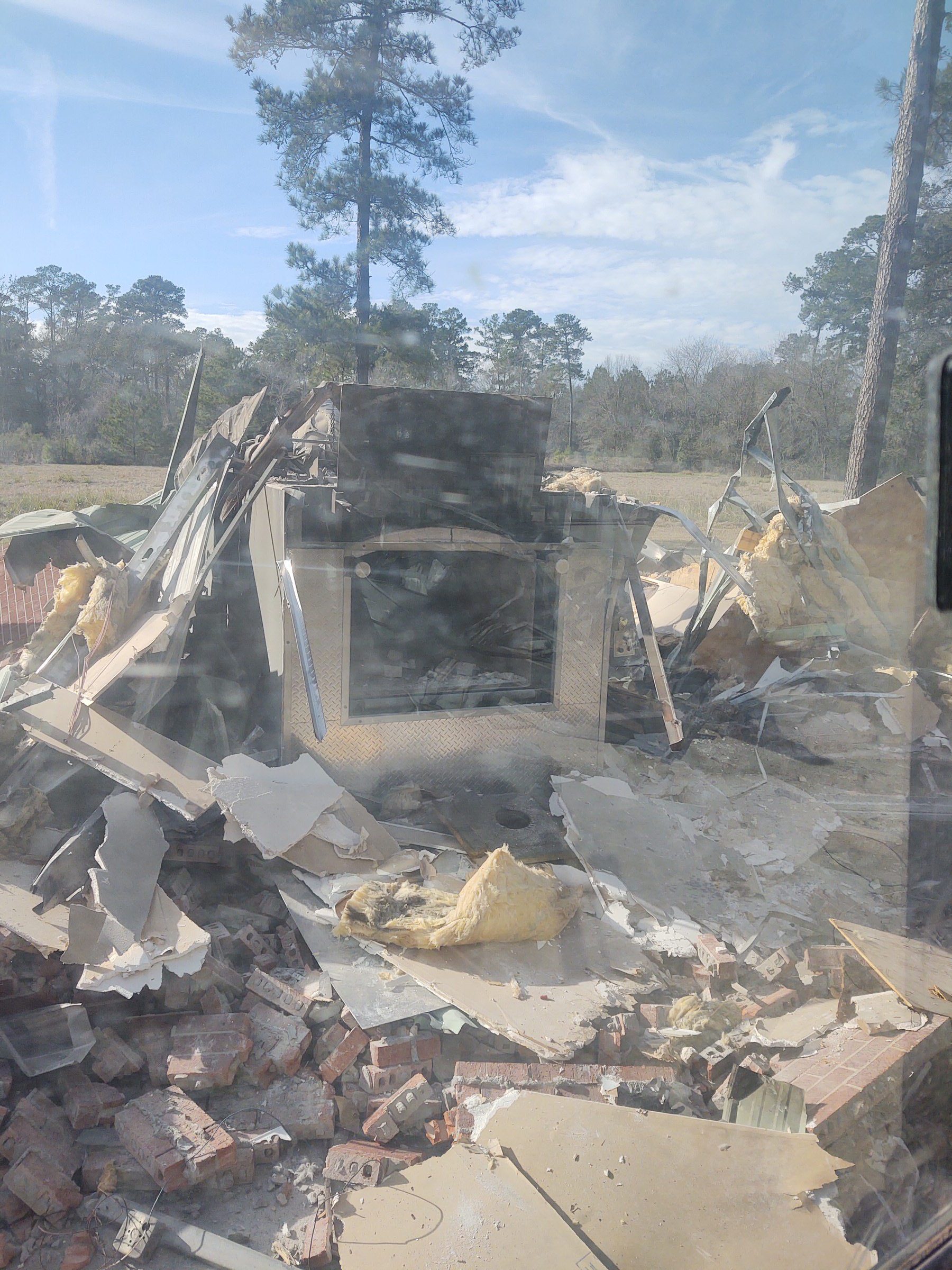Report on Ozone Levels and Air Quality in the Dallas-Fort Worth Region
Overview of Ozone Exceedances in 2025
The Dallas-Fort Worth region has experienced seven days in 2025 when ozone levels surpassed unhealthy air quality standards for sensitive groups, according to data from air quality officials at the North Central Texas Council of Governments (NCTCOG).
On these days, the Texas Commission on Environmental Quality (TCEQ) issued Ozone Action Day alerts, signaling ozone concentrations above 70 parts per billion (ppb). These alerts serve to inform the public and encourage actions to reduce air pollution and ozone formation, aligning with Sustainable Development Goal (SDG) 3: Good Health and Well-being, by protecting vulnerable populations such as children, older adults, and those with respiratory conditions.
Public Guidance and Health Implications
- Residents are advised to minimize outdoor exposure during high ozone days.
- Encouragement to carpool, avoid vehicle idling, and stay updated on weather forecasts.
- Ozone levels between 71 and 85 ppb are classified as unhealthy for sensitive groups, while levels between 55 and 70 ppb are considered moderate.
These measures contribute to SDG 11: Sustainable Cities and Communities, by promoting healthier urban environments and reducing air pollution.
Ozone Level Trends and Seasonal Patterns
- From March to July 2025, the region recorded 41 days with moderate ozone levels.
- The first Ozone Action Day alert of the year was issued on April 10.
- Compared to the same period in 2024, fewer unhealthy ozone days have been observed.
- Between May 18 and June 15, 2024, 12 ozone alerts were issued, with a total of 43 alerts in 2024.
- The ozone season in Dallas-Fort Worth extends from March through October, with more alerts anticipated later in the year.
Understanding Ozone and Its Sources
Ozone, commonly known as smog, forms when volatile organic compounds (VOCs) and nitrogen oxides (NOx) emitted by human activities and natural sources react under sunlight. Major contributors include:
- Vehicle emissions
- Power plants
- Industrial sites
- Area sources such as paints and motorized lawn equipment
This information highlights the importance of SDG 13: Climate Action, emphasizing the need to reduce emissions from transportation and industry to improve air quality.
Health Risks and Regulatory Status
Exposure to elevated ozone levels can cause chest pain, coughing, throat irritation, and congestion, and exacerbate respiratory diseases such as emphysema, asthma, and bronchitis. The Dallas-Fort Worth area is currently designated as a severe nonattainment zone under the U.S. Environmental Protection Agency (EPA) standards, failing to meet the National Ambient Air Quality Standards (NAAQS) for ozone.
The current design value for ozone in North Texas is 79 ppb for 2025, exceeding the federal limit of 70 ppb. This situation poses risks to public health and may result in significant penalties for polluters, including potential annual fines up to $45 million under the Clean Air Act if ozone levels are not reduced to or below 75 ppb.
These regulatory challenges underscore the relevance of SDG 16: Peace, Justice and Strong Institutions, by highlighting the role of effective environmental governance and enforcement.
Policy Developments and Community Engagement
- Federal policy changes may impact enforcement of air quality regulations, with recent proposals aiming to roll back clean air protections for power plant emissions.
- The North Central Texas Council of Governments is actively seeking public feedback on the Dallas-Fort Worth Air Quality Improvement Plan, which outlines strategies to reduce air pollution through 2050.
- Transportation emissions, accounting for 41% of regional greenhouse gases, are a primary focus of these strategies, linking directly to SDG 9: Industry, Innovation and Infrastructure, and SDG 7: Affordable and Clean Energy.
Conclusion
The ongoing monitoring and management of ozone levels in the Dallas-Fort Worth region are critical to achieving multiple Sustainable Development Goals, including SDG 3 (Good Health and Well-being), SDG 11 (Sustainable Cities and Communities), SDG 13 (Climate Action), and SDG 16 (Peace, Justice and Strong Institutions). Collaborative efforts between government agencies, communities, and stakeholders are essential to improve air quality, protect public health, and promote sustainable urban development.
1. Sustainable Development Goals (SDGs) Addressed or Connected
- SDG 3: Good Health and Well-being
- The article discusses health risks related to ozone pollution, such as respiratory problems and health advisories for sensitive groups.
- SDG 11: Sustainable Cities and Communities
- Focus on improving air quality in the Dallas-Fort Worth metropolitan area to create healthier urban environments.
- SDG 13: Climate Action
- Addressing emissions from vehicles and industrial sources contributing to ozone formation and air pollution.
- SDG 7: Affordable and Clean Energy (implied)
- References to power plants and emissions suggest relevance to clean energy transition to reduce pollution.
2. Specific Targets Under Those SDGs Identified
- SDG 3 – Target 3.9: Reduce the number of deaths and illnesses from hazardous chemicals and air, water, and soil pollution and contamination.
- The article highlights ozone pollution causing health issues and efforts to reduce it.
- SDG 11 – Target 11.6: Reduce the adverse per capita environmental impact of cities, including air quality improvement.
- Efforts to monitor and reduce ozone levels in Dallas-Fort Worth align with this target.
- SDG 13 – Target 13.2: Integrate climate change measures into policies and planning.
- The Dallas-Fort Worth Air Quality Improvement Plan and related policies reflect this target.
- SDG 7 – Target 7.2: Increase substantially the share of renewable energy in the global energy mix. (Implied)
- Reducing emissions from power plants and industrial sources implies a shift towards cleaner energy.
3. Indicators Mentioned or Implied to Measure Progress
- Indicator for SDG 3.9: Mortality rate attributed to household and ambient air pollution.
- Ozone levels and health advisories indicate monitoring of air pollution’s health impact.
- Indicator for SDG 11.6: Annual mean levels of fine particulate matter (PM2.5) and ozone in cities.
- The article provides data on ozone levels exceeding 70 parts per billion and number of Ozone Action Days.
- Indicator for SDG 13.2: Number of countries with national and local disaster risk reduction strategies. (Adapted to local air quality plans)
- The Dallas-Fort Worth Air Quality Improvement Plan serves as a local strategy to reduce pollution.
- Additional Indicators:
- Number of Ozone Action Day alerts issued annually.
- Design value of ozone concentration (average of fourth-worst ozone days over three years).
- Percentage of greenhouse gas emissions from transportation (41% in the region).
4. Table: SDGs, Targets and Indicators
| SDGs | Targets | Indicators |
|---|---|---|
| SDG 3: Good Health and Well-being | 3.9: Reduce deaths and illnesses from hazardous chemicals and air pollution | Mortality rate attributed to household and ambient air pollution; ozone level exceedances; health advisories for sensitive groups |
| SDG 11: Sustainable Cities and Communities | 11.6: Reduce adverse environmental impact of cities, including air quality | Annual mean levels of ozone; number of Ozone Action Day alerts; days exceeding unhealthy ozone levels |
| SDG 13: Climate Action | 13.2: Integrate climate change measures into policies and planning | Existence and implementation of Air Quality Improvement Plan; reduction in ozone design values over time |
| SDG 7: Affordable and Clean Energy (implied) | 7.2: Increase share of renewable energy in the energy mix | Emissions data from power plants and industrial sources; policies targeting emission reductions |
Source: fortworthreport.org







